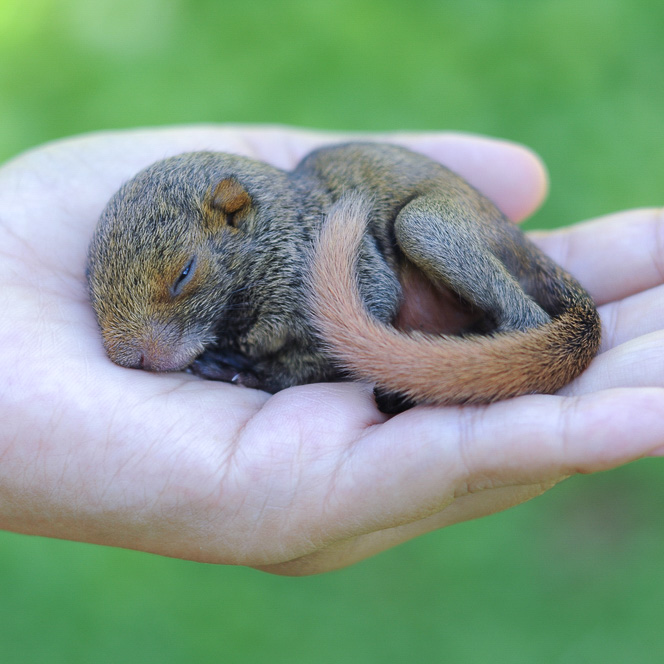
Care of Baby Squirrels: A Comprehensive Guide
Introduction
Baby squirrels, often referred to as kittens, are adorable and helpless creatures that require specialized care to thrive. Whether you have found an orphaned squirrel or are simply curious about their care, this comprehensive guide will provide you with all the essential information you need to ensure their well-being.
Identifying Baby Squirrels
Baby squirrels are typically born in the spring or summer and are easily identifiable by their small size, lack of fur, and closed eyes. They are usually found in nests high up in trees, but may occasionally fall out or be abandoned.
Determining the Age of Baby Squirrels
Estimating the age of a baby squirrel is crucial for providing appropriate care. Here are some guidelines:
- Newborn: Eyes closed, no fur, weight less than 1 ounce
- 1-2 weeks: Eyes opening, fur starting to grow, weight around 1-2 ounces
- 3-4 weeks: Eyes fully open, fur covering most of the body, weight around 2-4 ounces
- 5-6 weeks: Fur fully developed, weight around 4-6 ounces, starting to climb and explore
- 7-8 weeks: Weaned from milk, weight around 6-8 ounces, ready to be released
Providing Shelter
Baby squirrels require a warm and secure shelter to rest and sleep. A small cardboard box lined with soft fabric or a pet carrier with a heating pad set on low can provide a suitable environment.
Feeding Baby Squirrels
Feeding baby squirrels is a critical aspect of their care. They require a specialized formula that mimics their mother’s milk.
- Formula: Use a commercial squirrel milk replacer or a homemade formula made with evaporated goat’s milk, heavy cream, and yogurt.
- Feeding Schedule: Feed every 2-3 hours for the first few weeks, gradually increasing the interval as they grow.
- Feeding Method: Use a syringe or a small bottle with a nipple. Avoid overfeeding, as this can lead to digestive issues.
Hydration
Baby squirrels also need to stay hydrated. Offer them water in a shallow dish or use a syringe to gently administer water.
Stimulating Elimination
Baby squirrels cannot eliminate on their own. After each feeding, gently rub their genital area with a warm, damp cloth to stimulate urination and defecation.
Keeping Baby Squirrels Warm
Baby squirrels are unable to regulate their body temperature. Provide a heating pad set on low or a warm water bottle wrapped in a towel to keep them warm. Monitor their temperature closely to avoid overheating.
Socialization
Baby squirrels are social creatures and require interaction to develop properly. Handle them gently and talk to them in a soothing voice. Avoid excessive handling, as this can stress them out.
Veterinary Care
It is essential to take baby squirrels to a veterinarian for regular checkups and vaccinations. The veterinarian can assess their health, provide appropriate medical care, and advise on their care and release.
Rehabilitation and Release
The ultimate goal of caring for baby squirrels is to rehabilitate them and release them back into the wild. This process involves gradually introducing them to outdoor environments and teaching them survival skills.
- Soft Release: Place the squirrel in a cage outside for several hours each day, gradually increasing the duration.
- Hard Release: Release the squirrel into a suitable habitat with access to food, water, and shelter.
Legal Considerations
In many areas, it is illegal to keep squirrels as pets. It is important to check local regulations before caring for a baby squirrel.
Conclusion
Caring for baby squirrels is a rewarding but challenging experience. By following these guidelines, you can provide them with the essential care they need to thrive and eventually return to their natural habitat. Remember to consult with a veterinarian for professional advice and to comply with all legal requirements.
